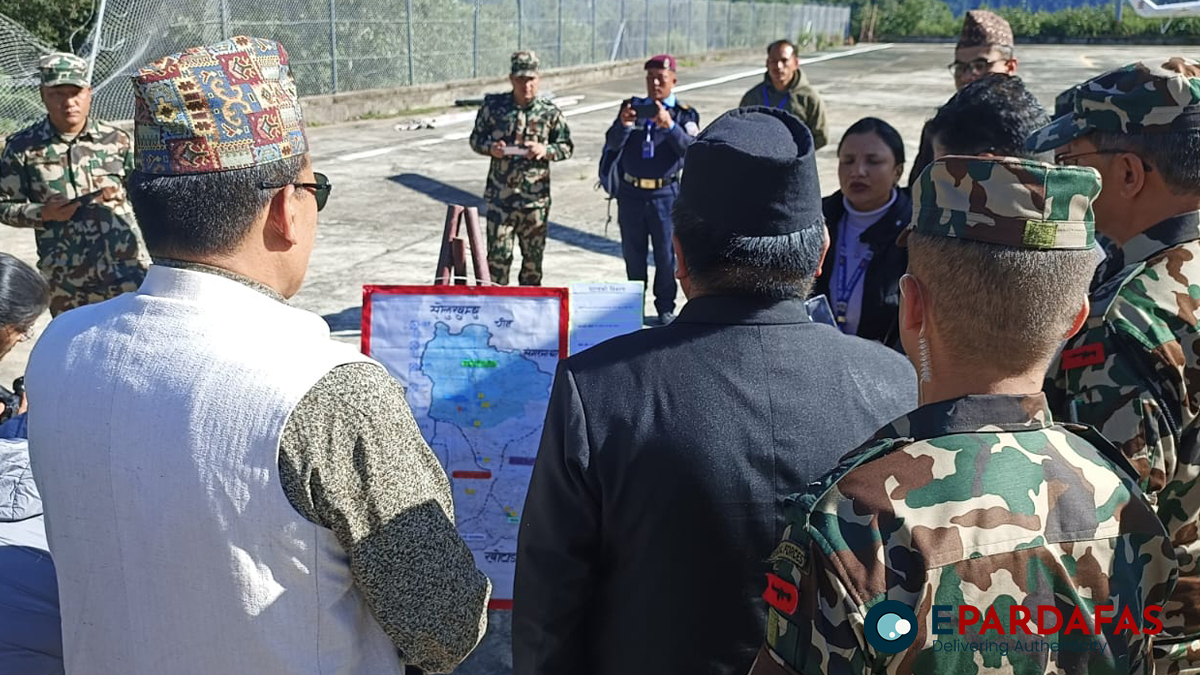A study report on the flood triggered by the outburst of a glacial lake in the upper Thamekhola watershed of Khumbu Pasang Lhamu Rural Municipality-5, Solukhumbu, has been made public, warning that the risk of climate-induced disasters in the region remains high.
The report emphasizes the need for urgent measures to mitigate potential hazards. Executive Chief of the National Disaster Risk Reduction and Management Authority (NDRRMA), Dinesh Prasad Bhatta, highlighted the ongoing threat posed by glacial lakes in Thame and other areas, stressing the necessity of detailed studies and coordinated risk-reduction efforts.
“There is a need to learn from past disasters and develop strategies to minimize future damage,” Bhatta said. He also emphasized discussions on securing human settlements at risk.
NDRRMA Joint Secretary Arjun Kumar Bam reiterated that the danger of glacial lake outburst floods (GLOF) still looms over Thame, calling for extensive preparations. “We will coordinate with relevant stakeholders to install early warning systems and prioritize disaster-resilient reconstruction of private houses,” he said.
Khumbu Pasang Lhamu Rural Municipality Chair Mingma Chhiri Sherpa urged the federal government to expedite the reconstruction of settlements and infrastructure damaged by past disasters. “As they say, justice delayed is justice denied. Thame and other areas remain vulnerable to climate-induced disasters, and we must work proactively to mitigate these risks,” Sherpa stated. He also emphasized the need for coordination among all three tiers of government for disaster preparedness and local adaptation planning.
Asian Development Bank senior climate expert Avani Mani Dixit said the study would help shape future policies and strategies to prevent potential risks. He noted that the glacial lake outburst in Thame had exposed the complexity of climate-induced disaster risks, necessitating scientific monitoring, engineering solutions, and increased awareness among local communities.
Sudan Bikram Maharjan, a geologist at the International Centre for Integrated Mountain Development (ICIMOD) and a member of the study team, warned that glacial lakes in Thame Valley remain highly vulnerable and could cause large-scale destruction in the event of a GLOF.
Climatologist Keshav Sharma underscored the need for water management, riverbank conservation, and flood control infrastructure in high-risk areas, alongside non-structural measures to enhance emergency preparedness.
Experts have called for the establishment of hydrological and meteorological monitoring centers to strengthen the region’s disaster forecasting and response systems.



Comments